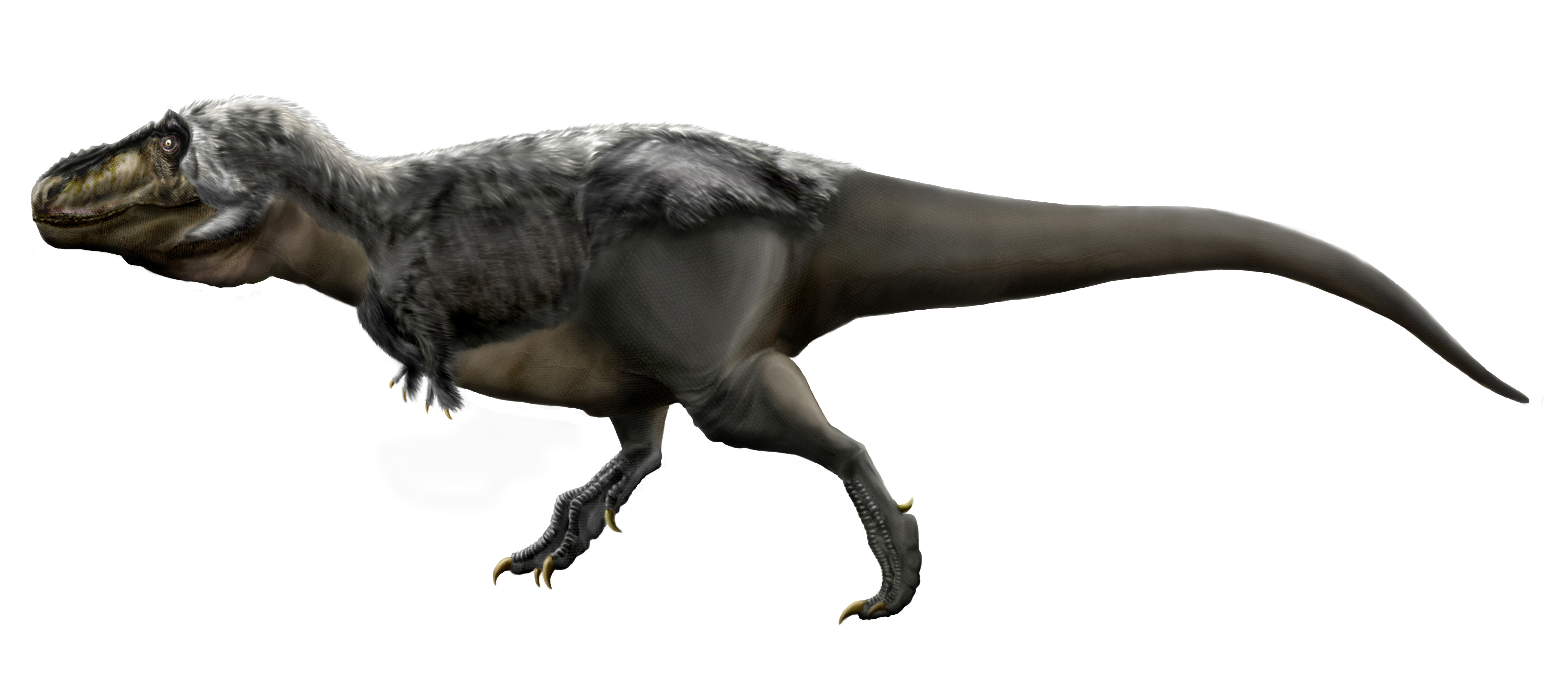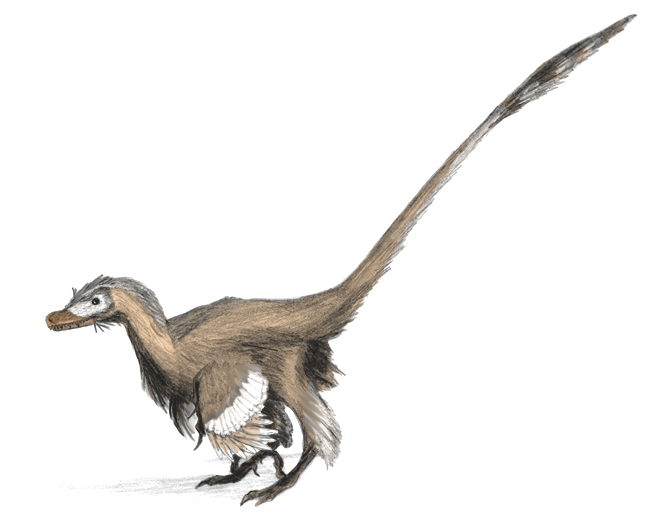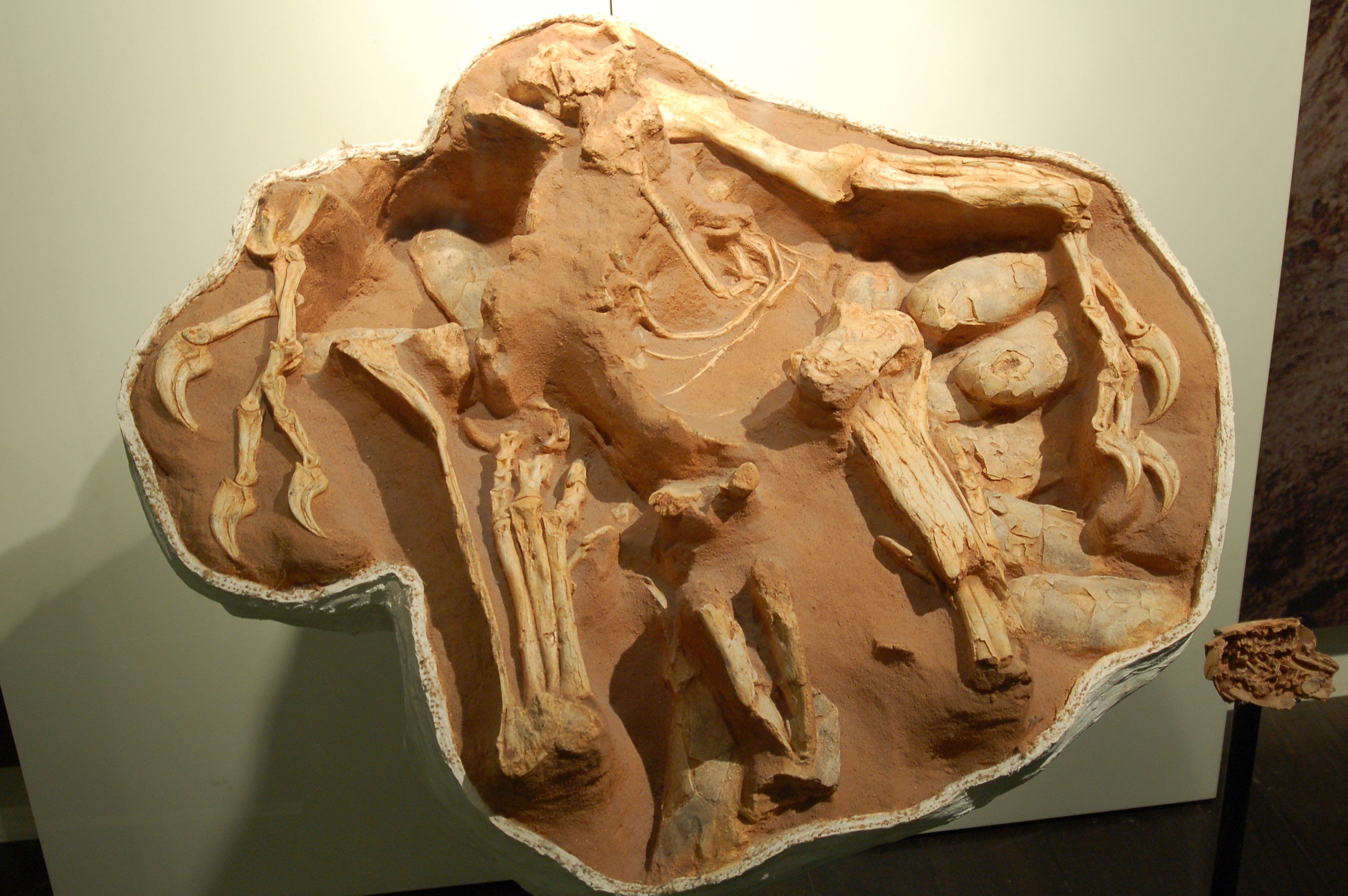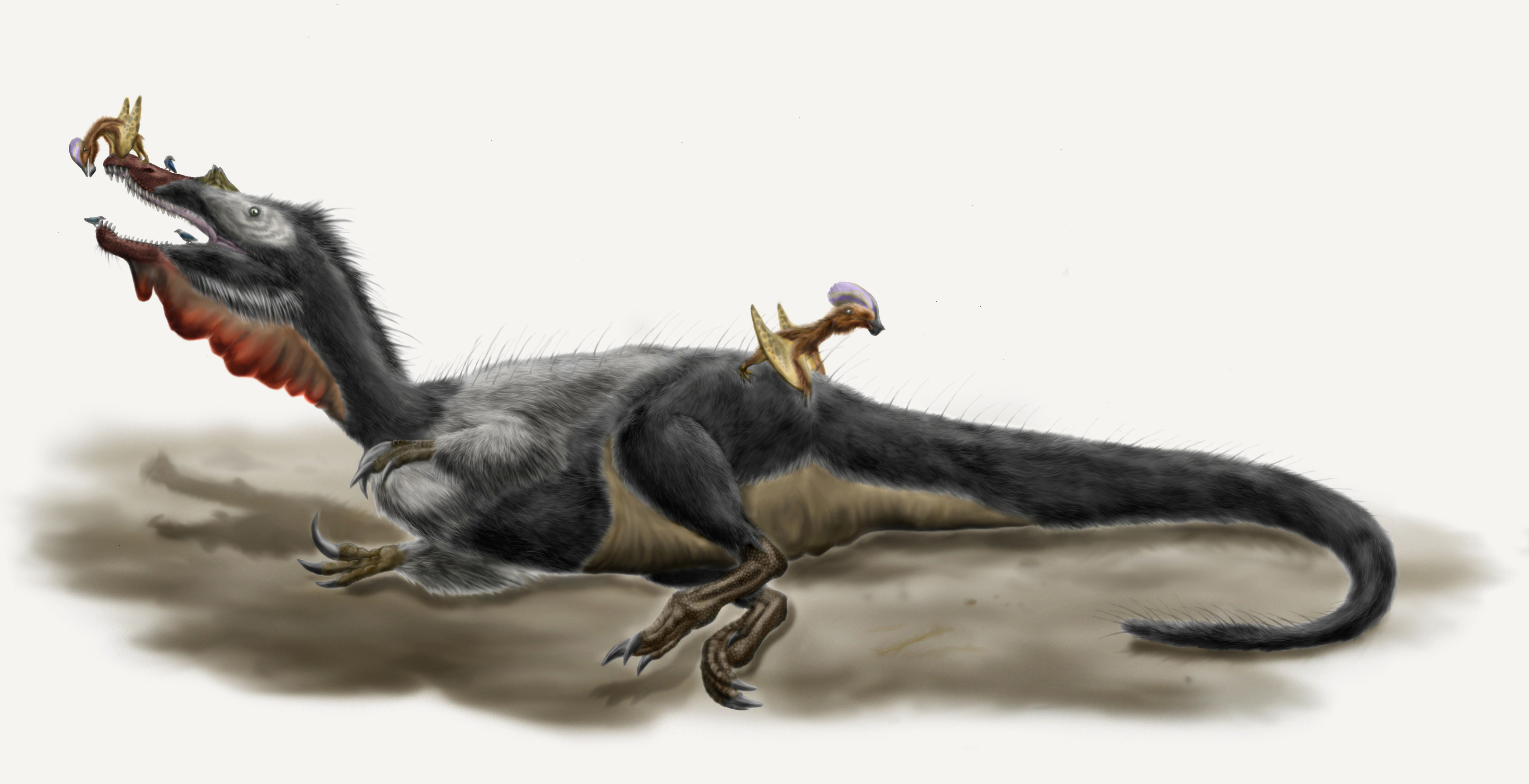I thought I'd do a fun post for once. And since list based articles are the norm for fun on the internet, I thought I'd do one on dinosaurs, but given that I know most about theropods, I've decided to restrict my list to theropods (...maybe in a future post, I'll do other clades).
My ranking is based mostly on scientific importance so it may not reflect awesomeness, and it is obviously subjective as to how I rank importance to science. For instance, interesting discoveries or unique palaeobiology are ranked relatively low compared to wealth of information and data or completely revolutionising our understanding of the evolution of theropods.
So here are my top 10 scientifically important theropod dinosaurs of all time (off the top of my head)
10. Megalosaurus
Being the first dinosaur to be named, Megalosaurus automatically deserves a spot on this list, but given the fragmentary nature of known fossil specimens, and being mostly useless as a meaningful source for biological trait data, I'm placing it at number 10.
9. Deinocheirus
Long known only as a disembodied giant pair of arms, Deinocheirus turned out to be more bizarre than anyone could have envisioned. The recent rediscovery of the rest of the body may be one of the most shocking palaeontological discoveries of my lifetime. Not only did they find more specimens of Deinocheirus, they actually found the rest of the body that the disembodied pair of arms belonged to - how crazy is that?
Also, Deinocheirus turned out to be a weird, giant, hump-backed, herbivorous ornithomimosaur...hardly an ostrich mimic...
...However, as cool as it may be, its scientific importance to my eyes are relatively low...
8. Coelophysis
Known from multiple specimens, Coelophysis (mostly C. bauri) from the Late Triassic has provided generations of palaeontologists with invaluable information on early theropods. Coelophysis is known from at least two continents, C. bauri from North America and C. rhodesiensis from Africa, with other close relatives distributed globally (e.g. Liliensternus from Europe and Zupaysaurus from South America).
Interestingly, despite their early occurrences, coelophysoids are not representative of primitive theropods and show high levels of specialisation, particularly in their biting performances (Sakamoto 2010).
7. Allosaurus
Known from thousands of specimens, palaeontologists know a great deal about Allosaurus, making it the go-to dinosaur for a typical large-bodied theropod.
6. Tyrannosaurus
Not only is Tyrannosaurus an awesome and undoubtedly fearsome dinosaur, like Allosaurus, we know an awful lot about its palaeobiology - including ontogeny. This owes to the fact that we have fossil specimens of multiple individuals (including juveniles), and nearly complete specimens at that (just look at Sue or Stan)!
To me personally, one cool aspect of T. rex is that some specimens like Stan (BHI-3033) have extensive muscle scarring on the skull and jaw bones, and combined with the near three-dimensionally preserved skull and jaw elements, one can infer the arrangements, orientations and sizes of jaw closing muscles, and even go so far as to estimate bite force!
I'm sure some palaeontologists will gripe that T. rex is overstudied - to some extent they are correct - but just look at it - seriously, just look at it...Why would you not want to study this (if you like dinosaurs)?
5. Velociraptor
Though popularised through its appearances in both Michael Crichton's fictional novel Jurassic Park, and its film adaptation of the same name, as a 6?-foot tall pack hunting killing machine with the intelligence of a chimpanzee, the real Velociraptor was nothing of the sort. It was much smaller being the size of a medium to large dog, and its intelligence was certainly not anywhere near that of a chimp. At least, its brain size relative to body size was much smaller even compared to more modern birds. However, Velociraptor is still a significant and important dinosaur.
First, it is known from multiple individuals, so we've got a fairly good knowledge about its anatomy.
Second, see the image above...it's one of the few dinosaurs preserved in mortal combat with its potential prey, Protoceratops. Or at least they were fighting for one reason or another.
Last, but perhaps most importantly, there is direct evidence for the presence of secondary feathers in Velociraptor in the form of feather attachment sites (quill knobs) on the ulna, or one of the forearm bones. This goes to show that proper bird-like feathers and not just proto-feathery filaments (like in Sinornithosaurus) were also present in large-bodied dromaeosaurs, not limited to small-bodied dromaeosaurs like Microraptor.
4. Citipati/Oviraptor
Quite confusingly, Citipati (along with the Zamyn Khondt specimen GIN 100/42) is usually what we all visualise in our minds when we hear "Oviraptor". I won't dwell on that since The Bite Stuff by Jaime Headden covered that in detail.
Citipati is important because of its role in identifying one of the greatest misnomers in dinosaur taxonomic history, and clearing the good name of Oviraptor and all its relatives. That is, as many will already know, about the iconic and ironic namesake of Oviraptor as "egg thief"...Oviraptor was discovered sitting atop a nest of eggs, which were assumed to belong to Protoceratops, so it was further assumed that Oviraptor was caught stealing those eggs. This idea remained relatively unchallenged (?) for decades until it was discovered that the so-called Protoceratops eggs contained embryos of oviraptorosaur dinosaurs, which were identified as belonging to the genus Citipati. So it turns out, ironically, that these dinosaurs weren't in fact stealing eggs but were protecting/brooding them...how sad! Now that I've got two kids of my own, it's even more tragic to think that a caring parent died atop its brood...
My Top 3...
3. Deinonychus
While not as well known or represented with nearly as many specimens (or complete ones at that) as its close relative Velociraptor, Deinonychus deserves a position one rank above it in my book (remember, this is a subjective list) owing to its role in pretty much single handedly instigating the dinosaur renaissance. Now, maybe my history is off and maybe it's not exactly how it took off, but starting in the late 1960's, John Ostrom, who discovered Deinonychus (in 1964), along with his then student and subsequently world-famous Robert Bakker, kicked off what is now known as the Dinosaur Renaissance. Ostrom and Bakker pushed for a renewed view of dinosaurs as warm-blooded and active animals, similar to mammals. Deinonychus particularly was heralded as the small-bodied, yet agile and deadly pack hunter that could take down prey many times its own body size. Their arguments revolutionised dinosaur palaeobiology, laying the foundation for many of our understanding today. Deinonychus is responsible for this - so this is actually my favourite dinosaur.
2. Sinosauropteryx
Runner up is Sinosauropterxy, the first ever non-avian theropod dinosaur to be discovered with feathery integuments preserved. I'm gonna go into a bit of personal reflection here, but in 1998, my mother came home with an issue of Nature magazine, featured in it was the article on the discovery of a feathered dinosaur - Sinosauropteryx...
The discovery of proto-feathers on a non-avian theropod dinosaur dramatically changed our understanding of when and how feathers evolved. Much has been written on this topic already so I won't cover it here, but remember, Sinosauropteryx started this all.
More recently, it's been shown that the filamentous integuments of Sinosauropteryx specimens actually preserve melanosomes, or colour pigments, busting a long-standing, "busted myth" that palaeontologists have no idea what colours dinosaurs were! What a taxon to change palaeontological and popular notion, not once but twice...
1. Archaeopteryx
You can call me biased - or that I'm like them ornithologists - but my number one theropod dinosaur has got to be Archaeopteryx. Not much needs to be said about this dinosaur, but it is the oldest fossil bird and a classic 'transitional' species (if you still want to use that kind of phrasing). To Darwin, Archaeopteryx must have been the 'missing link' that proved his theory of evolution - Archaeopteryx shows that birds evolved from feathered reptiles, having a long tail, teeth and feathers, a true mosaic of characters linking birds with a reptile ancestry. Thus Archaeopteryx is one of the best (if not the best) examples of evolution from the fossil record.
However, while Archaeopteryx shows unequivocally that birds arose from reptiles, exactly which group of reptiles it belongs to has been less than certain in the past. The notion that Archaeopteryx is a theropod dinosaur is not particularly new, but it wasn't till the 1970's when John Ostrom (yet again) pushed this idea forward that it became more widely acknowledged... and possibly not till the 80s and 90s that it became widely accepted by dinosaur researchers. Obviously, the discovery of Sinosauropteryx in 1998 pretty much put an end to any contentious views (except for a very small but vocal minority).
What is now contested however is whether Archaeopteryx can truly be considered the oldest bird. This catchy headline sums the contention rather nicely - Archaeopteryx knocked off its perch as first bird. The study (and similar papers) underpinning this article have found that Archaeopteryx was not a true bird but more closely related to other bird-like theropods, namely dromaeosaurs and troodontids. If this were true, the implications would be huge - not only does it imply that Archaeopteryx was not the first bird, but it also indicates that bird-like ecomorphology evolved more than once within bird-like (paravian) theropods. Having said that, I don't believe this to be the case. Subsequent analyses by other authors have reaffirmed the position of Archaeopteryx as a bird (or more closely related to all other Mesozoic and modern birds than to dromaeosaurs or troodontids). In my opinion what this reflects is not the uncertainties surrounding the affinities of Archaeopteryx but the complexity of bird-like trait evolution at and around the origin of birds, i.e. within Paraves. Recent studies (Brusatte et al. 2014; Puttick et al. 2014; Baker et al. 2016) show that birds are not really unique but merely part of an 'experimental' evolutionary radiation of paravian theropods (birds, dromaeosaurs, troodontids and close kins, may or may not including the enigmatic Epidexipteryx) - much of what we observe as bird-specific traits such as complex flight feathers, wish bone, wings etc were already present in many paravian theropods. The conflicting phylogenetic hypotheses probably only reflects how complex (and possibly rapid) the evolution of bird features was that relationships can be inferred to be one way or another depending on the sample or data examined.
...and that is it for my list of top 10 scientifically important theropod dinosaurs of all time (off the top of my head). I've led in with a disclosure that it's all subjective. I'm sure some will disagree - hey, we're all free to make our own lists.
Bonus level: Baryonyx
I thought a spinosaur should be on this list, since they are the only clade of giant theropods to adapt to a semi-aquatic lifestyle or piscivorous diet...but I had to make space for Citipati...I wasn't sure whether Baryonyx or Deinocheirus should be 9th place, but I went with the latter... Spinosaurus obviously tops the enigmatic status, but I thought Baryonyx is historically the more important since it was the discovery of Bayonyx that helped resolve the mystery of Spinosaurus (as the original Spinosaurus specimens housed in a museum in Germany were destroyed during WWII) and cemented the group as piscivorous theropods, mainly owing to the croc-like jaw margins of Baryonyx that was not known till then in Spinosaurus or any other theropod dinosaur.
My ranking is based mostly on scientific importance so it may not reflect awesomeness, and it is obviously subjective as to how I rank importance to science. For instance, interesting discoveries or unique palaeobiology are ranked relatively low compared to wealth of information and data or completely revolutionising our understanding of the evolution of theropods.
So here are my top 10 scientifically important theropod dinosaurs of all time (off the top of my head)
10. Megalosaurus
Being the first dinosaur to be named, Megalosaurus automatically deserves a spot on this list, but given the fragmentary nature of known fossil specimens, and being mostly useless as a meaningful source for biological trait data, I'm placing it at number 10.
9. Deinocheirus
Long known only as a disembodied giant pair of arms, Deinocheirus turned out to be more bizarre than anyone could have envisioned. The recent rediscovery of the rest of the body may be one of the most shocking palaeontological discoveries of my lifetime. Not only did they find more specimens of Deinocheirus, they actually found the rest of the body that the disembodied pair of arms belonged to - how crazy is that?
Also, Deinocheirus turned out to be a weird, giant, hump-backed, herbivorous ornithomimosaur...hardly an ostrich mimic...
...However, as cool as it may be, its scientific importance to my eyes are relatively low...
Known from multiple specimens, Coelophysis (mostly C. bauri) from the Late Triassic has provided generations of palaeontologists with invaluable information on early theropods. Coelophysis is known from at least two continents, C. bauri from North America and C. rhodesiensis from Africa, with other close relatives distributed globally (e.g. Liliensternus from Europe and Zupaysaurus from South America).
Interestingly, despite their early occurrences, coelophysoids are not representative of primitive theropods and show high levels of specialisation, particularly in their biting performances (Sakamoto 2010).
7. Allosaurus
Known from thousands of specimens, palaeontologists know a great deal about Allosaurus, making it the go-to dinosaur for a typical large-bodied theropod.
6. Tyrannosaurus
Not only is Tyrannosaurus an awesome and undoubtedly fearsome dinosaur, like Allosaurus, we know an awful lot about its palaeobiology - including ontogeny. This owes to the fact that we have fossil specimens of multiple individuals (including juveniles), and nearly complete specimens at that (just look at Sue or Stan)!
To me personally, one cool aspect of T. rex is that some specimens like Stan (BHI-3033) have extensive muscle scarring on the skull and jaw bones, and combined with the near three-dimensionally preserved skull and jaw elements, one can infer the arrangements, orientations and sizes of jaw closing muscles, and even go so far as to estimate bite force!
I'm sure some palaeontologists will gripe that T. rex is overstudied - to some extent they are correct - but just look at it - seriously, just look at it...Why would you not want to study this (if you like dinosaurs)?
Though popularised through its appearances in both Michael Crichton's fictional novel Jurassic Park, and its film adaptation of the same name, as a 6?-foot tall pack hunting killing machine with the intelligence of a chimpanzee, the real Velociraptor was nothing of the sort. It was much smaller being the size of a medium to large dog, and its intelligence was certainly not anywhere near that of a chimp. At least, its brain size relative to body size was much smaller even compared to more modern birds. However, Velociraptor is still a significant and important dinosaur.
First, it is known from multiple individuals, so we've got a fairly good knowledge about its anatomy.
Second, see the image above...it's one of the few dinosaurs preserved in mortal combat with its potential prey, Protoceratops. Or at least they were fighting for one reason or another.
Last, but perhaps most importantly, there is direct evidence for the presence of secondary feathers in Velociraptor in the form of feather attachment sites (quill knobs) on the ulna, or one of the forearm bones. This goes to show that proper bird-like feathers and not just proto-feathery filaments (like in Sinornithosaurus) were also present in large-bodied dromaeosaurs, not limited to small-bodied dromaeosaurs like Microraptor.
4. Citipati/Oviraptor
Quite confusingly, Citipati (along with the Zamyn Khondt specimen GIN 100/42) is usually what we all visualise in our minds when we hear "Oviraptor". I won't dwell on that since The Bite Stuff by Jaime Headden covered that in detail.
Citipati is important because of its role in identifying one of the greatest misnomers in dinosaur taxonomic history, and clearing the good name of Oviraptor and all its relatives. That is, as many will already know, about the iconic and ironic namesake of Oviraptor as "egg thief"...Oviraptor was discovered sitting atop a nest of eggs, which were assumed to belong to Protoceratops, so it was further assumed that Oviraptor was caught stealing those eggs. This idea remained relatively unchallenged (?) for decades until it was discovered that the so-called Protoceratops eggs contained embryos of oviraptorosaur dinosaurs, which were identified as belonging to the genus Citipati. So it turns out, ironically, that these dinosaurs weren't in fact stealing eggs but were protecting/brooding them...how sad! Now that I've got two kids of my own, it's even more tragic to think that a caring parent died atop its brood...
My Top 3...
3. Deinonychus
While not as well known or represented with nearly as many specimens (or complete ones at that) as its close relative Velociraptor, Deinonychus deserves a position one rank above it in my book (remember, this is a subjective list) owing to its role in pretty much single handedly instigating the dinosaur renaissance. Now, maybe my history is off and maybe it's not exactly how it took off, but starting in the late 1960's, John Ostrom, who discovered Deinonychus (in 1964), along with his then student and subsequently world-famous Robert Bakker, kicked off what is now known as the Dinosaur Renaissance. Ostrom and Bakker pushed for a renewed view of dinosaurs as warm-blooded and active animals, similar to mammals. Deinonychus particularly was heralded as the small-bodied, yet agile and deadly pack hunter that could take down prey many times its own body size. Their arguments revolutionised dinosaur palaeobiology, laying the foundation for many of our understanding today. Deinonychus is responsible for this - so this is actually my favourite dinosaur.
2. Sinosauropteryx
Runner up is Sinosauropterxy, the first ever non-avian theropod dinosaur to be discovered with feathery integuments preserved. I'm gonna go into a bit of personal reflection here, but in 1998, my mother came home with an issue of Nature magazine, featured in it was the article on the discovery of a feathered dinosaur - Sinosauropteryx...
The discovery of proto-feathers on a non-avian theropod dinosaur dramatically changed our understanding of when and how feathers evolved. Much has been written on this topic already so I won't cover it here, but remember, Sinosauropteryx started this all.
More recently, it's been shown that the filamentous integuments of Sinosauropteryx specimens actually preserve melanosomes, or colour pigments, busting a long-standing, "busted myth" that palaeontologists have no idea what colours dinosaurs were! What a taxon to change palaeontological and popular notion, not once but twice...
1. Archaeopteryx
You can call me biased - or that I'm like them ornithologists - but my number one theropod dinosaur has got to be Archaeopteryx. Not much needs to be said about this dinosaur, but it is the oldest fossil bird and a classic 'transitional' species (if you still want to use that kind of phrasing). To Darwin, Archaeopteryx must have been the 'missing link' that proved his theory of evolution - Archaeopteryx shows that birds evolved from feathered reptiles, having a long tail, teeth and feathers, a true mosaic of characters linking birds with a reptile ancestry. Thus Archaeopteryx is one of the best (if not the best) examples of evolution from the fossil record.
However, while Archaeopteryx shows unequivocally that birds arose from reptiles, exactly which group of reptiles it belongs to has been less than certain in the past. The notion that Archaeopteryx is a theropod dinosaur is not particularly new, but it wasn't till the 1970's when John Ostrom (yet again) pushed this idea forward that it became more widely acknowledged... and possibly not till the 80s and 90s that it became widely accepted by dinosaur researchers. Obviously, the discovery of Sinosauropteryx in 1998 pretty much put an end to any contentious views (except for a very small but vocal minority).
What is now contested however is whether Archaeopteryx can truly be considered the oldest bird. This catchy headline sums the contention rather nicely - Archaeopteryx knocked off its perch as first bird. The study (and similar papers) underpinning this article have found that Archaeopteryx was not a true bird but more closely related to other bird-like theropods, namely dromaeosaurs and troodontids. If this were true, the implications would be huge - not only does it imply that Archaeopteryx was not the first bird, but it also indicates that bird-like ecomorphology evolved more than once within bird-like (paravian) theropods. Having said that, I don't believe this to be the case. Subsequent analyses by other authors have reaffirmed the position of Archaeopteryx as a bird (or more closely related to all other Mesozoic and modern birds than to dromaeosaurs or troodontids). In my opinion what this reflects is not the uncertainties surrounding the affinities of Archaeopteryx but the complexity of bird-like trait evolution at and around the origin of birds, i.e. within Paraves. Recent studies (Brusatte et al. 2014; Puttick et al. 2014; Baker et al. 2016) show that birds are not really unique but merely part of an 'experimental' evolutionary radiation of paravian theropods (birds, dromaeosaurs, troodontids and close kins, may or may not including the enigmatic Epidexipteryx) - much of what we observe as bird-specific traits such as complex flight feathers, wish bone, wings etc were already present in many paravian theropods. The conflicting phylogenetic hypotheses probably only reflects how complex (and possibly rapid) the evolution of bird features was that relationships can be inferred to be one way or another depending on the sample or data examined.
...and that is it for my list of top 10 scientifically important theropod dinosaurs of all time (off the top of my head). I've led in with a disclosure that it's all subjective. I'm sure some will disagree - hey, we're all free to make our own lists.
Bonus level: Baryonyx
I thought a spinosaur should be on this list, since they are the only clade of giant theropods to adapt to a semi-aquatic lifestyle or piscivorous diet...but I had to make space for Citipati...I wasn't sure whether Baryonyx or Deinocheirus should be 9th place, but I went with the latter... Spinosaurus obviously tops the enigmatic status, but I thought Baryonyx is historically the more important since it was the discovery of Bayonyx that helped resolve the mystery of Spinosaurus (as the original Spinosaurus specimens housed in a museum in Germany were destroyed during WWII) and cemented the group as piscivorous theropods, mainly owing to the croc-like jaw margins of Baryonyx that was not known till then in Spinosaurus or any other theropod dinosaur.






.jpg)


.jpg)

.jpg)

Comments